This Wade & Butcher was restored to its former glory and rescaled with wooden kingwood or snakewood scales.
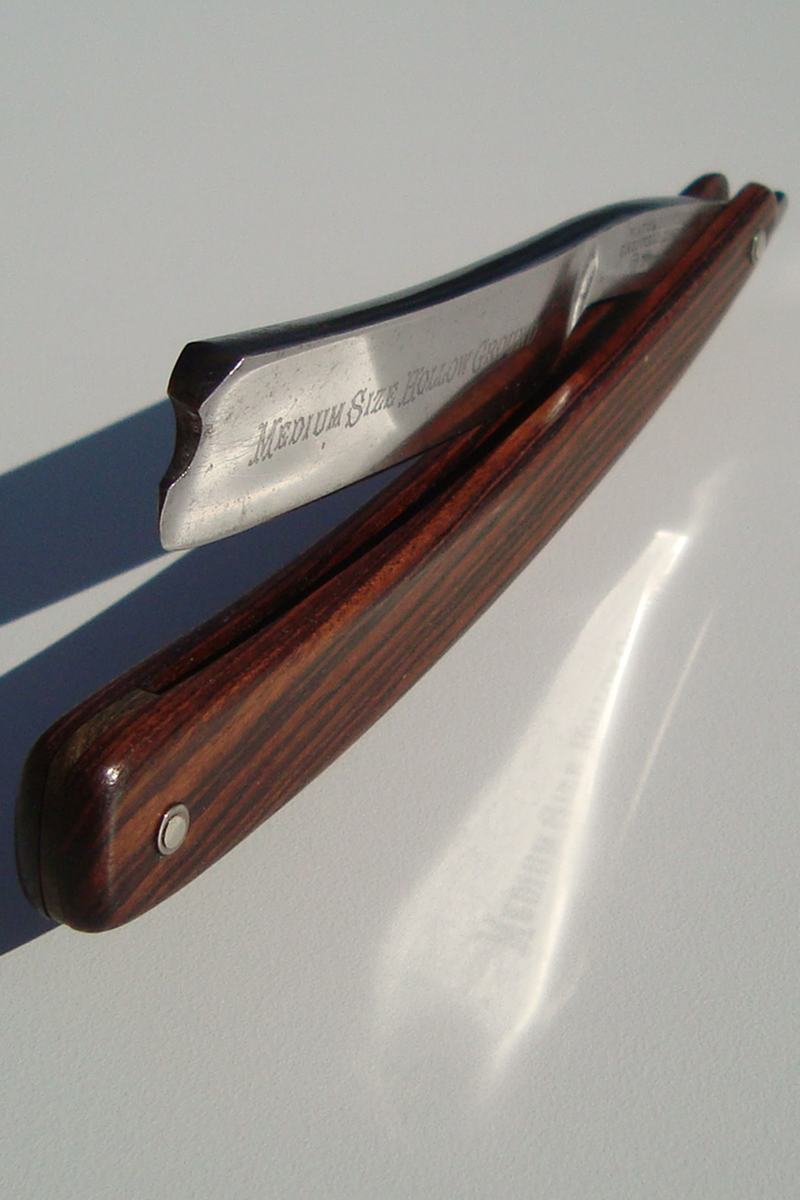


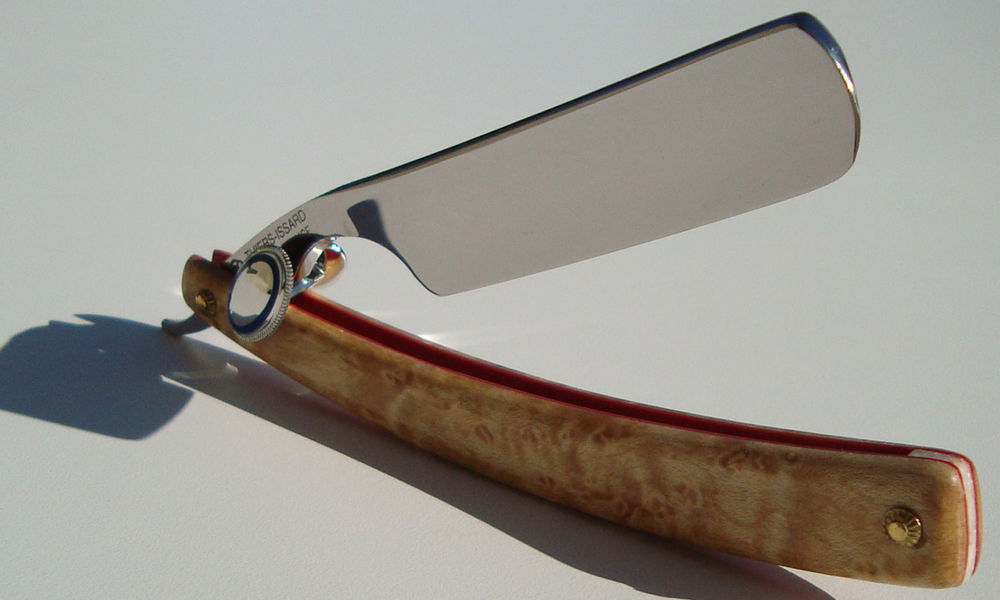
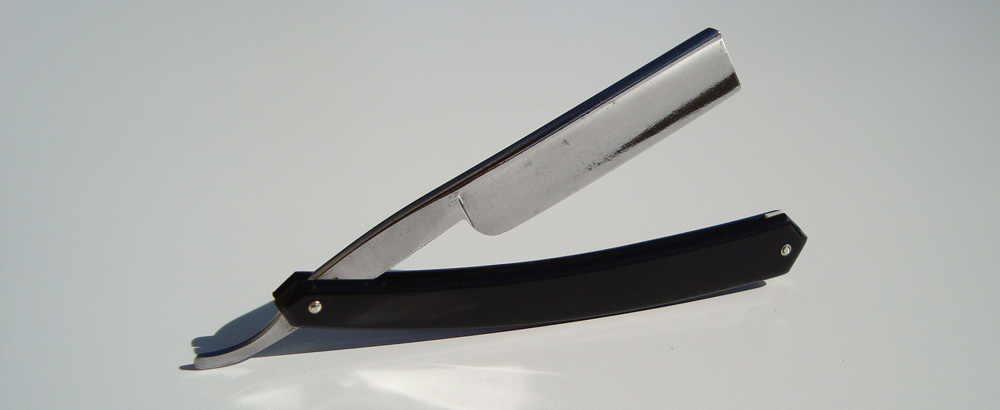
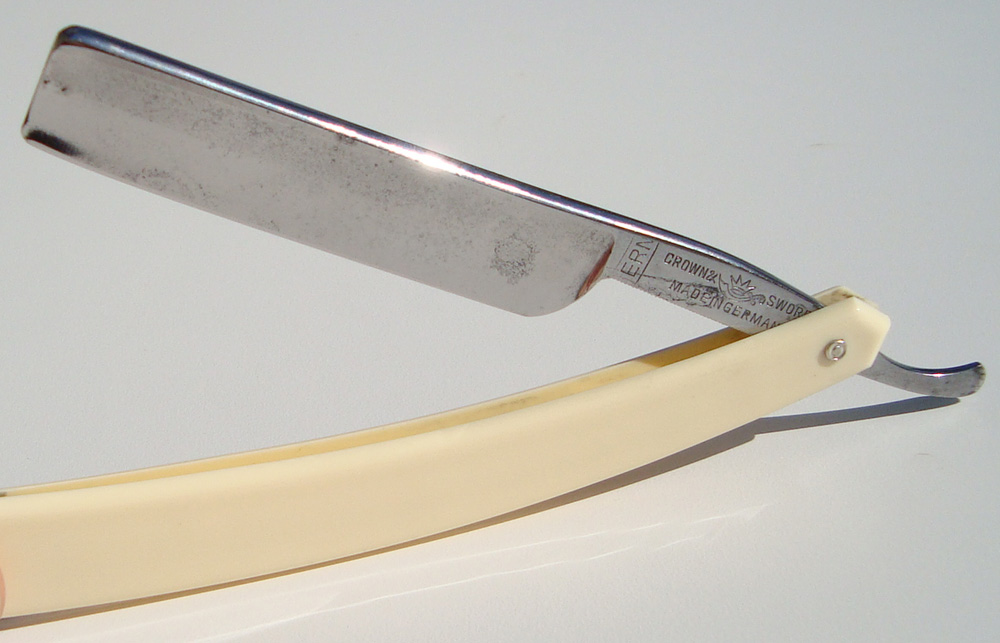
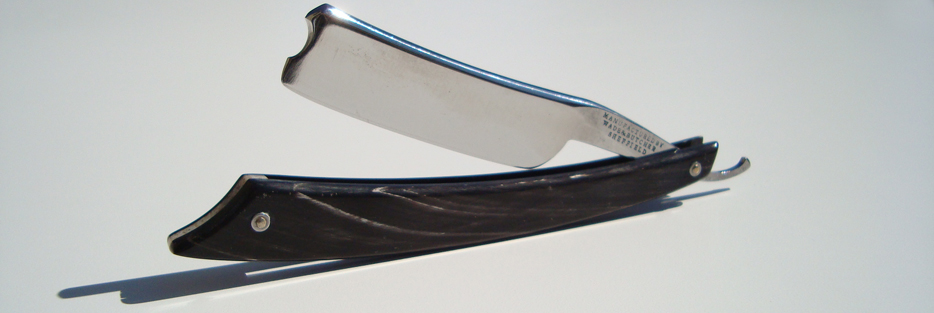
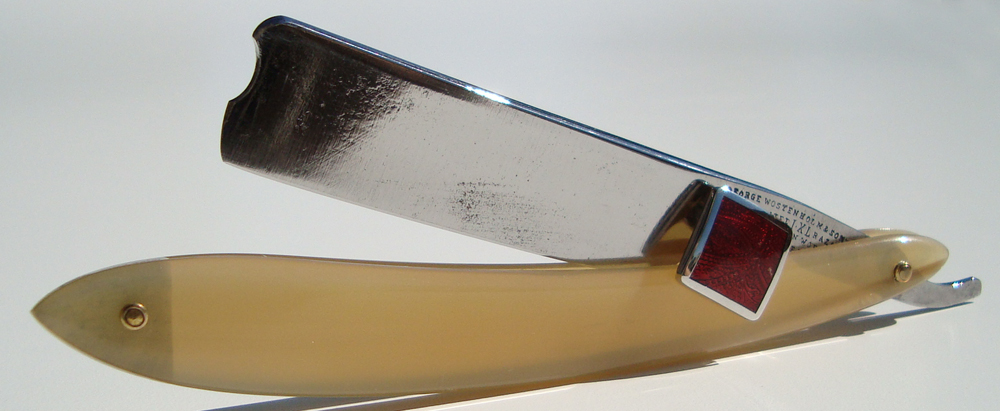

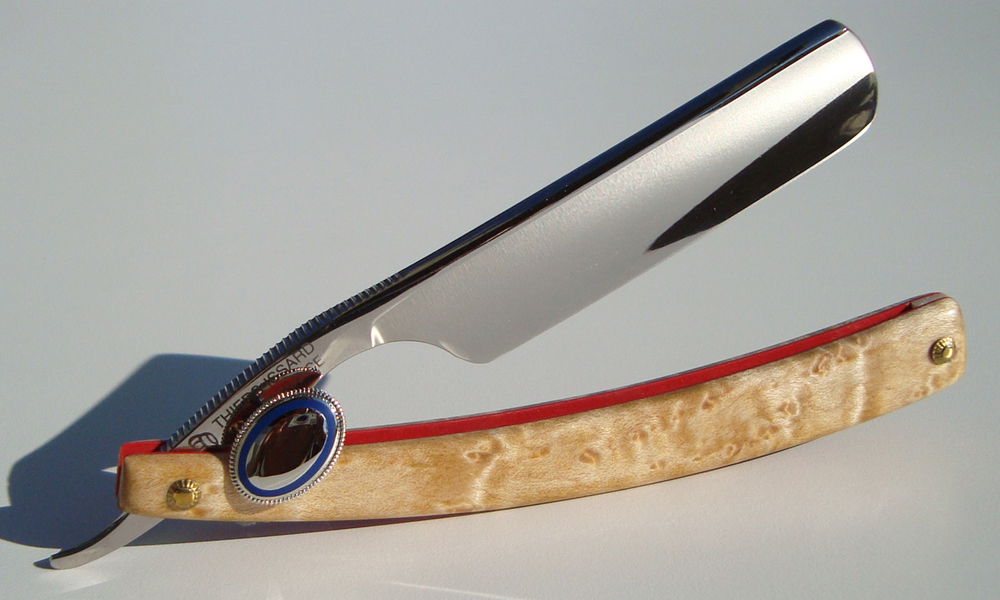
Thiers Issard has been making quality straight razors in France since 1884. In addition to razors, they produce other fine cutlery such as kitchen knives. Today, they are one of the two biggest manufacturers of straight razors in existence. Over the years we have honed and used many Thiers Issard razors; from older vintage razors, NOS Le Grelots (not actually a Thiers Issard blade), to modern Silverwings. Over the years, Thiers Issard has proven themselves committed to providing the customer quality cutlery. The scales on the above razor were a custom rescale job we did. We also polished the blade to bring out a true mirror finish. Yet, even with all the upgrades, you can tell this razor is a truly great piece of steel. The lack of a bolster and curved thumb holder are excellent features. This is one of our favorite razors.
The steel Thiers Issard uses on their standard razors is excellent. Thiers Issard has been called the “shaver’s razor,” and this nickname is entirely accurate. Out of today’s mass manufacturers, Thiers Issard is quite probably the best steel. Read our article on what makes a razor sharp for more information on what makes steel good. Thiers Issard normally hones up to an extremely keen edge. However, honing a Thiers Issard is not for amateurs, it is extremely time consuming and much more difficult than most other razors. Once the Thiers Issard is honed to perfection, it tends to stay that way for a while and provides a most excellent shave.
The scales and quality controls are Thiers Issard’s Achille’s heel. While Thiers Issard makes an excellent blade, the same cannot be said of their scales. For their most basic razor, the scales are just a cheap plastic with cheap pins. The pins are the same regardless of how much you spend on your Thiers Issard. It is generally said that you get what you pay for with Thiers Issard, so it is best not to buy their cheaper razors. While their pricier razors come with nicer scales, the quality does not scale with the price particularly well. The bottom line is that the scales could be better, but they are fully functional with pretty good balance as a whole.
Thiers Issard’s quality control and gold wash is not particularly good. It is sad to say that Dovo actually produces a better gold wash. Some TI’s have misaligned gold wash and in the past the gold wash has been very thin. Thiers Issard increased the thickness as of late.
For all their faults, the only real downside with buying a Thiers Issard is the price. While you generally get what you pay for with Thiers Issard, they get extremely expensive, extremely quickly. The only other downside is the difficulty in honing. This is not a DIY razor, it is highly recommended to consult a professional hone-meister.
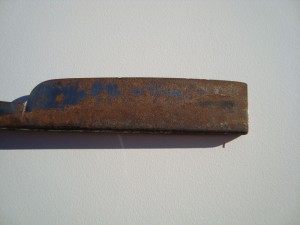
Unless you want your razor to look like this, read on
I get asked this question often and have come across many poorly maintained straights. So this post is to show you how to keep your well honed razor sharper longer, and prevent rust.
Rust is the enemy. Corrosion eats away at the edge and turns your well honed razor into a not so well honed piece of steel. Unfortunately, there is no escaping the fact that a straight razor requires more care to keep the edge well honed and rust free. But if you follow these steps it shouldn’t be too difficult or time consuming.
 According to this new blog post by John Tischler, Going Green by Shaving Straight, straight shaving is the cheaper than DE shaving! Now, everyone knew that straight razor + hone = set for life if you don’t break the razor. But Mr. Tischler’s math proves that DE’s are more expensive than straights even if you use a hone-meister! The math is in the article, however, he doesn’t state how many times you have to re-hone per year. We recommend once every 180 days of use. Of course, it’s only $10 per hone if you use our re-honing service. But I’m getting off-track. The point is, straight razor shaving is the cheapest means of shaving; even if you use a honemeister to sharpen & hone your razor for you!
According to this new blog post by John Tischler, Going Green by Shaving Straight, straight shaving is the cheaper than DE shaving! Now, everyone knew that straight razor + hone = set for life if you don’t break the razor. But Mr. Tischler’s math proves that DE’s are more expensive than straights even if you use a hone-meister! The math is in the article, however, he doesn’t state how many times you have to re-hone per year. We recommend once every 180 days of use. Of course, it’s only $10 per hone if you use our re-honing service. But I’m getting off-track. The point is, straight razor shaving is the cheapest means of shaving; even if you use a honemeister to sharpen & hone your razor for you!
Further savings can be had if you buy a vintage straight razor. There is no advantage to buying a modern razor as opposed to a restored vintage razor or one in great shape. You also don’t need a fancy strop. Any piece of good quality leather will suffice. Finally, you should be shaving with a brush and soap anyway, so these shouldn’t be additional costs. Finally, buying your own hone may be cheaper in the long run, but in the short term it is actually not cost effective. You need to buy an expensive finishing stone rated at least 12,000 grit; 16,000+ is better. But more importantly, you must invest a lot of time into learning how to hone. Even more time than you invested learning how to straight shave. At $100 for a finishing stone, you could purchase five year’s worth of professional honing.
Either way you go, the proof is in the numbers. Straight shaving is the cheapest way to shave!